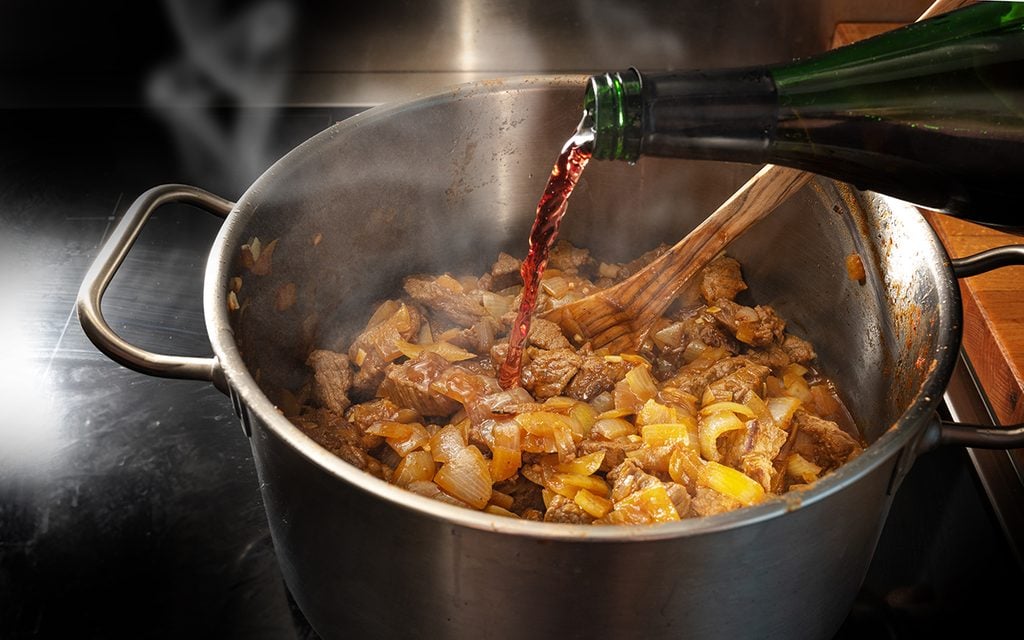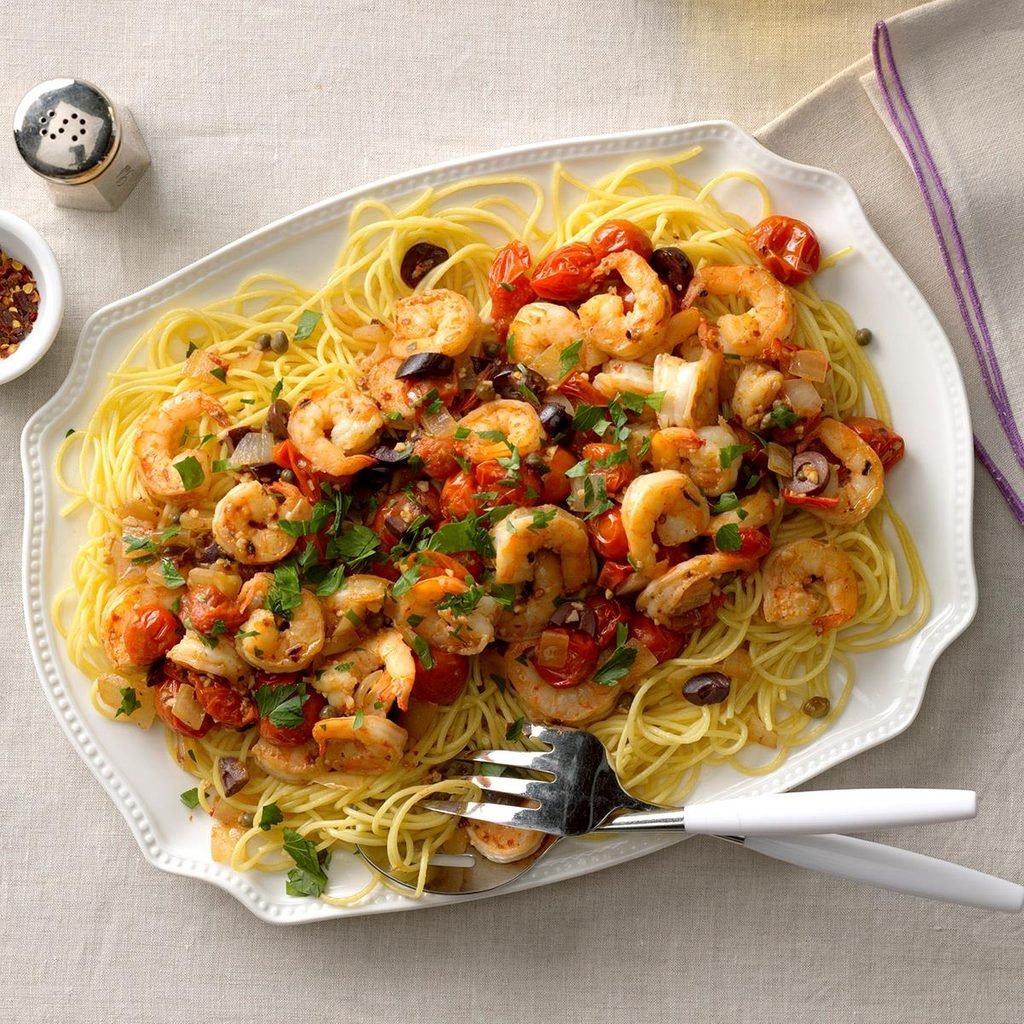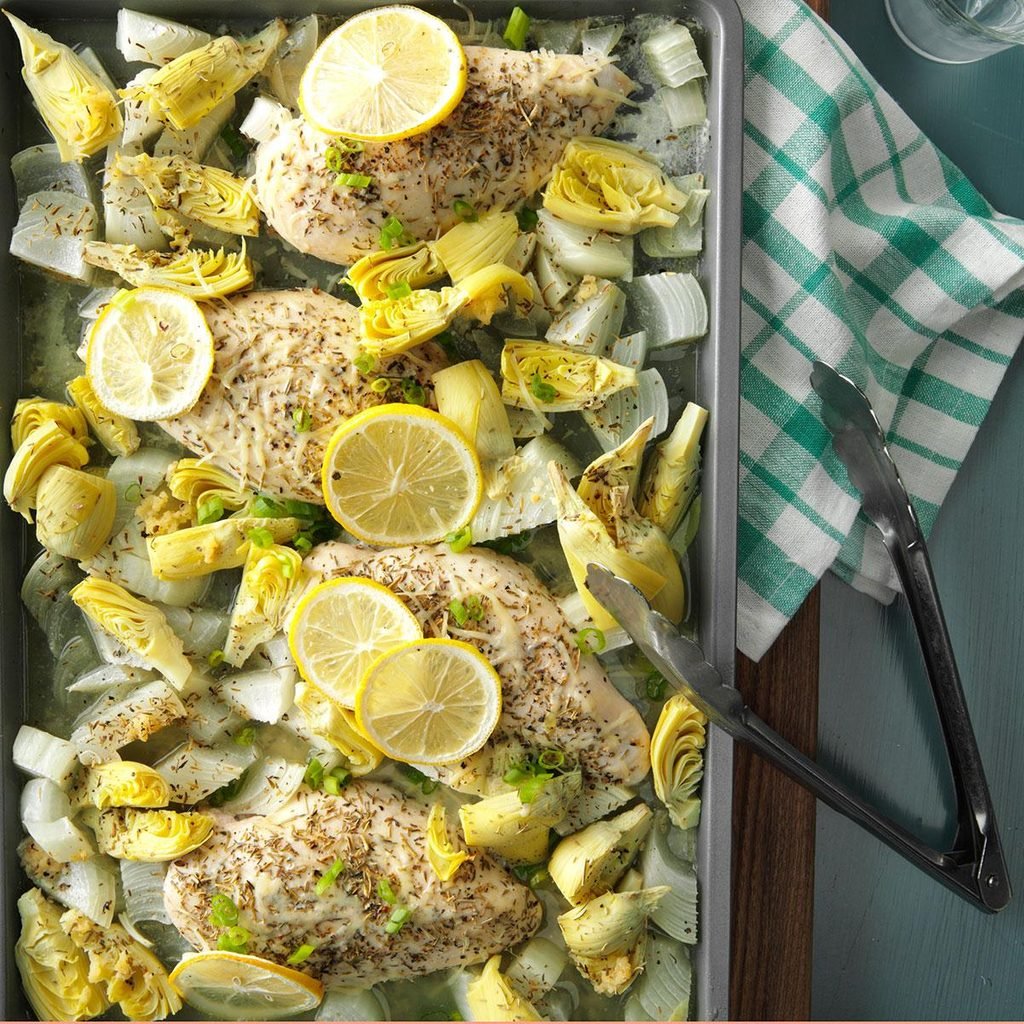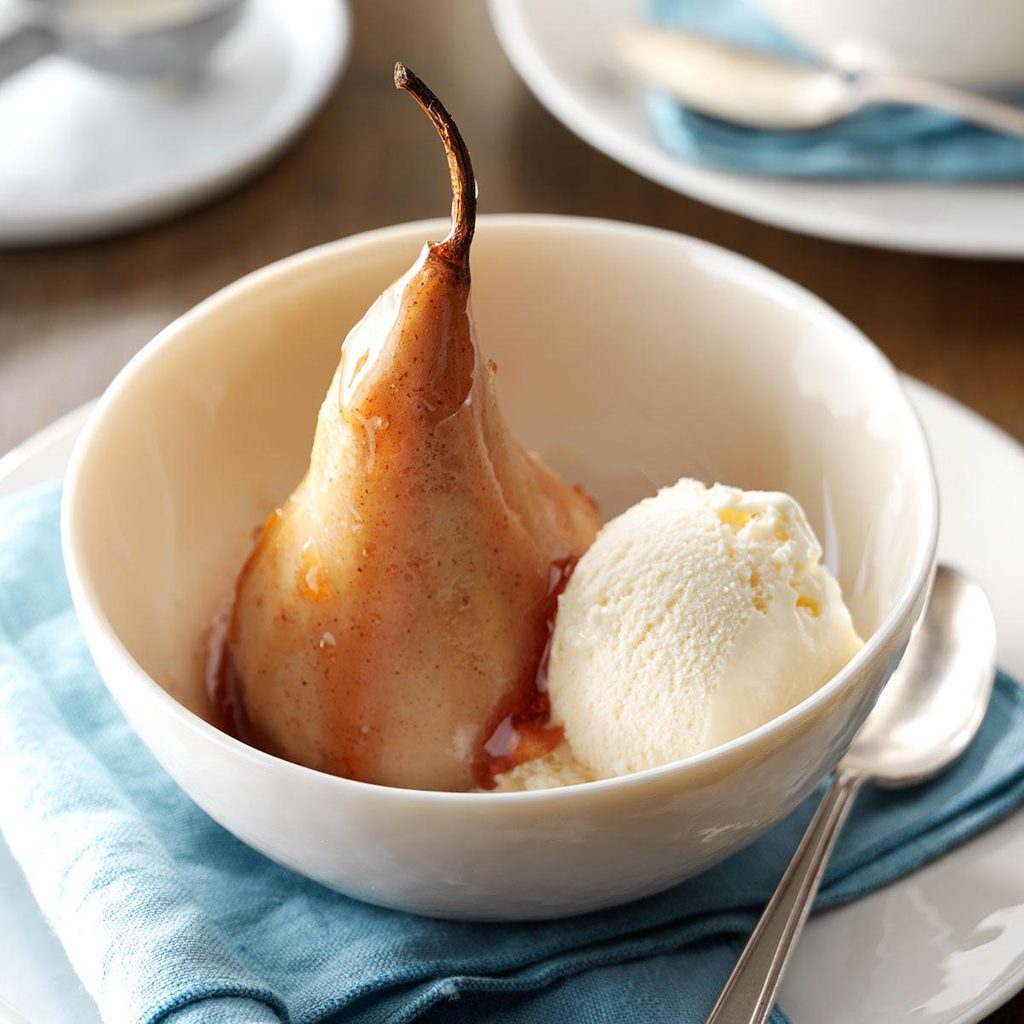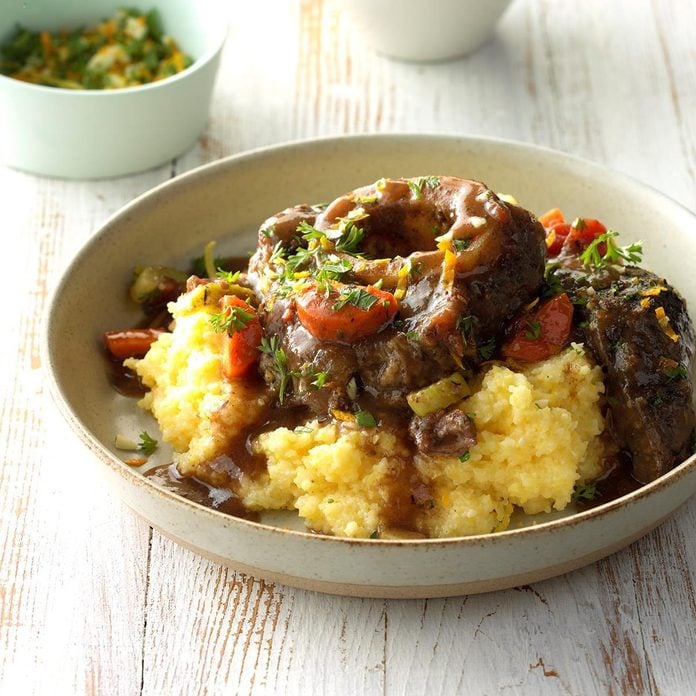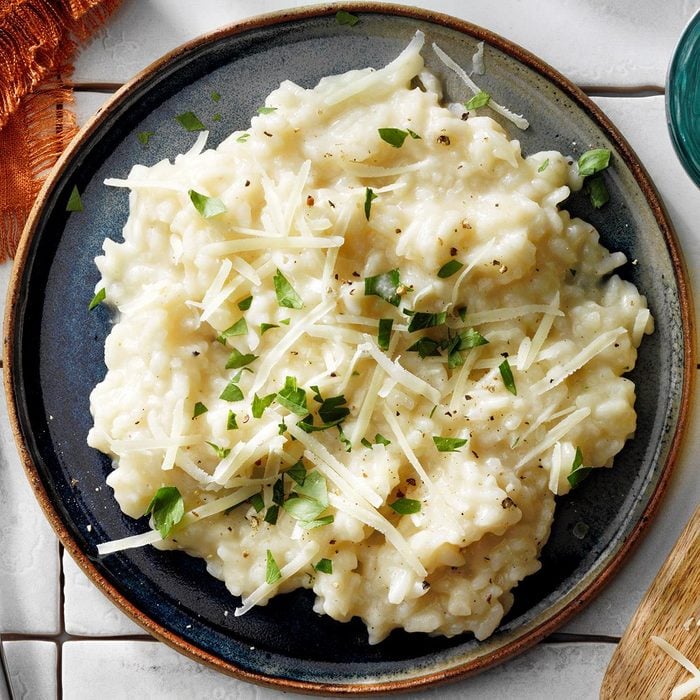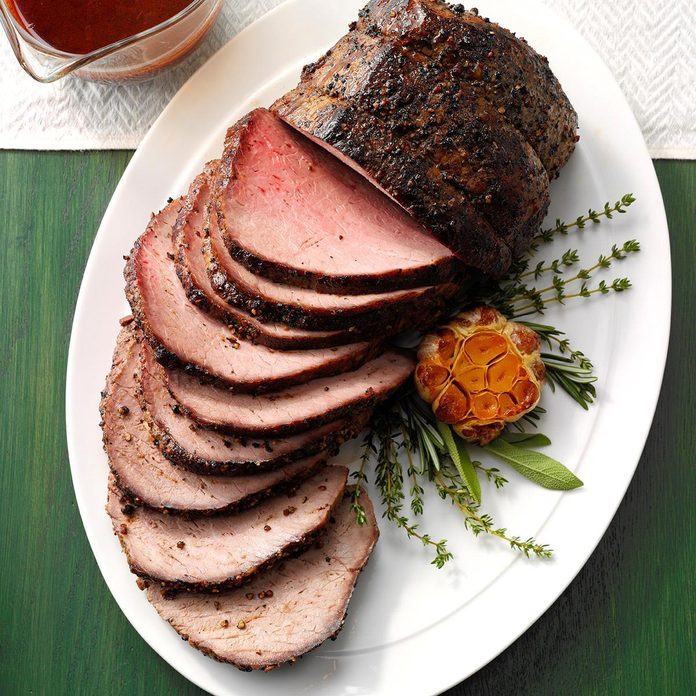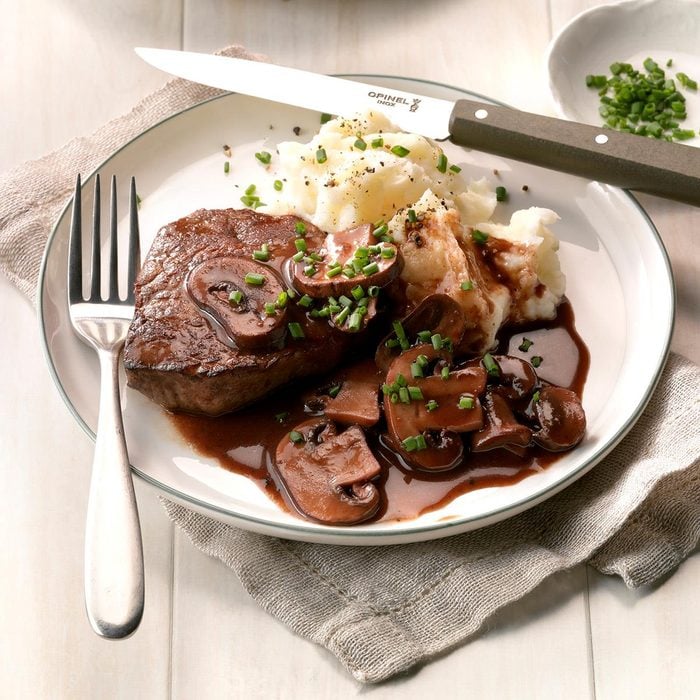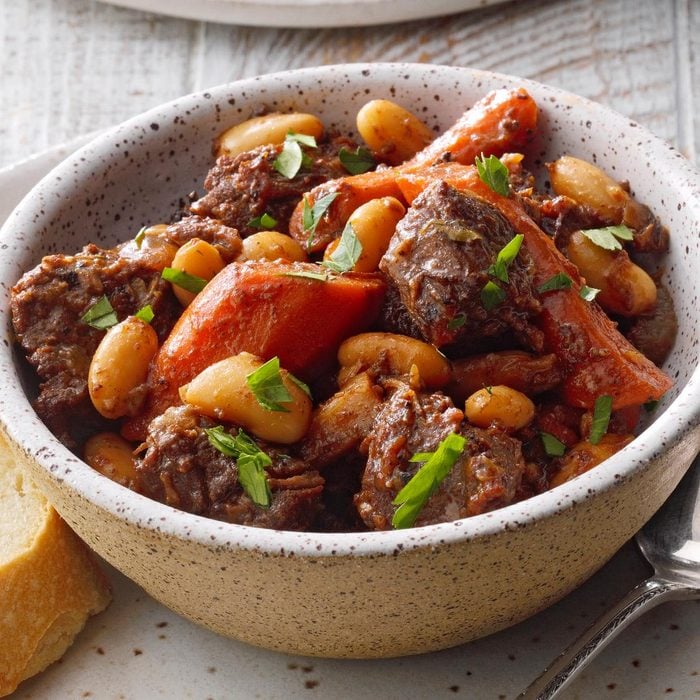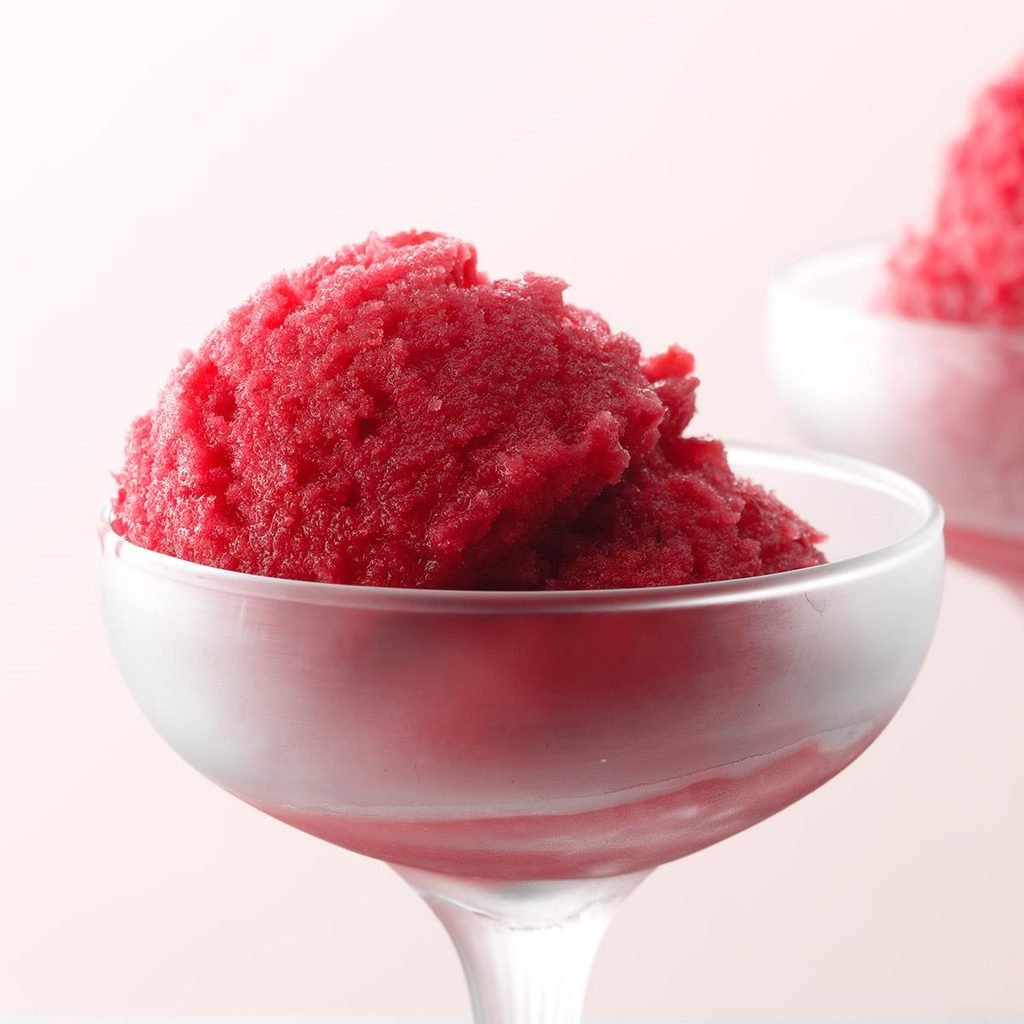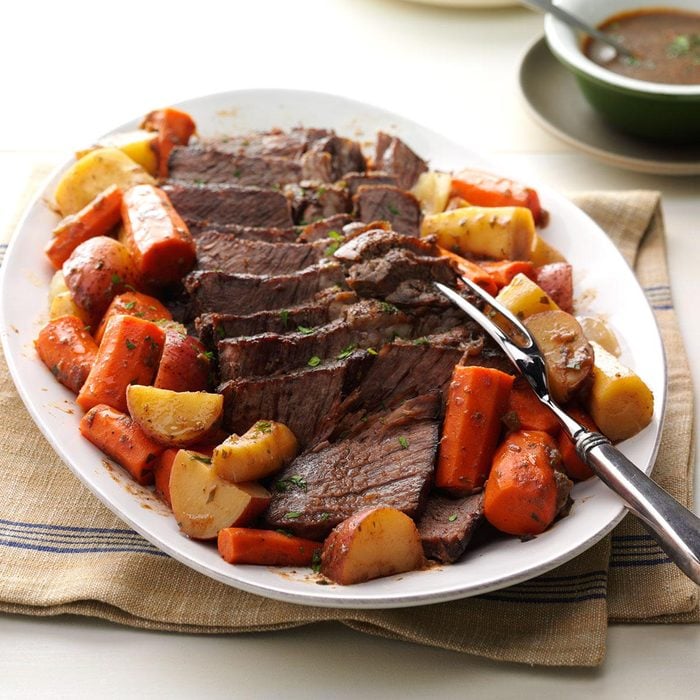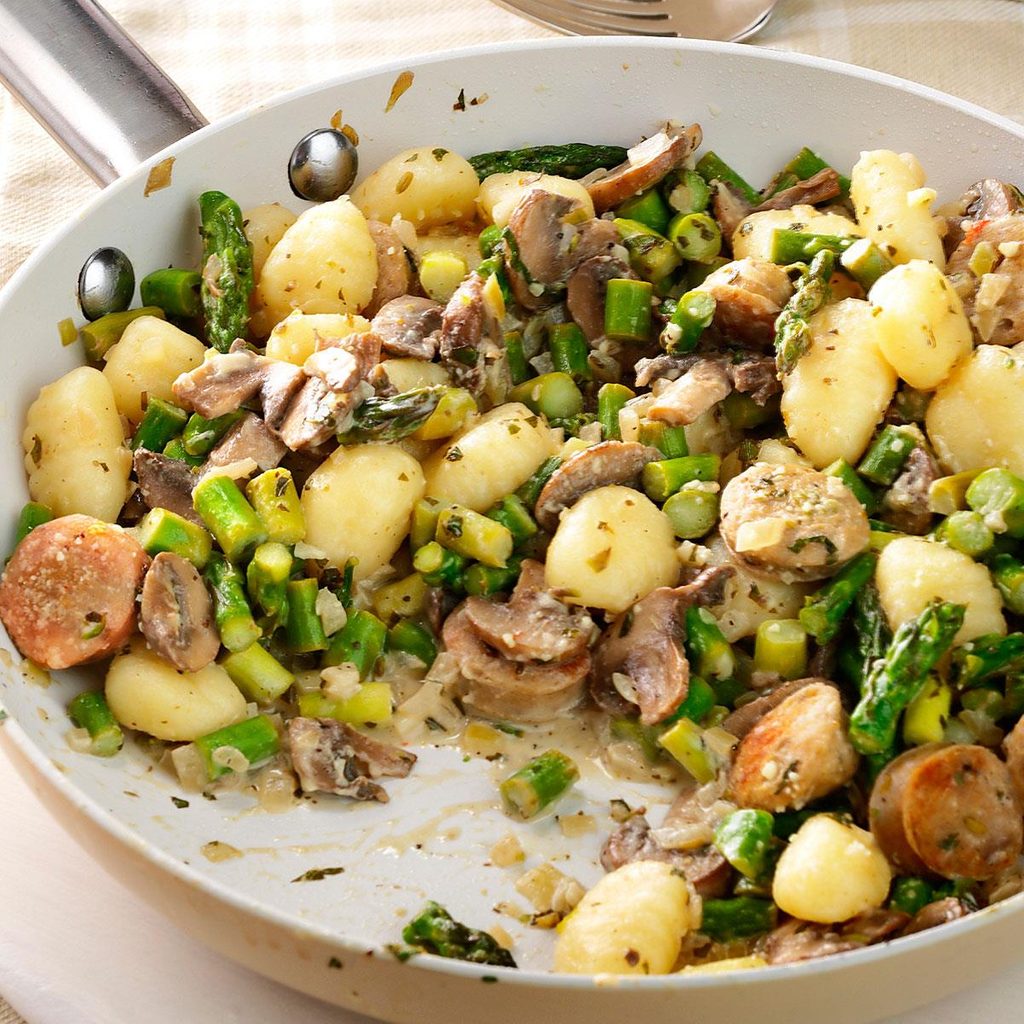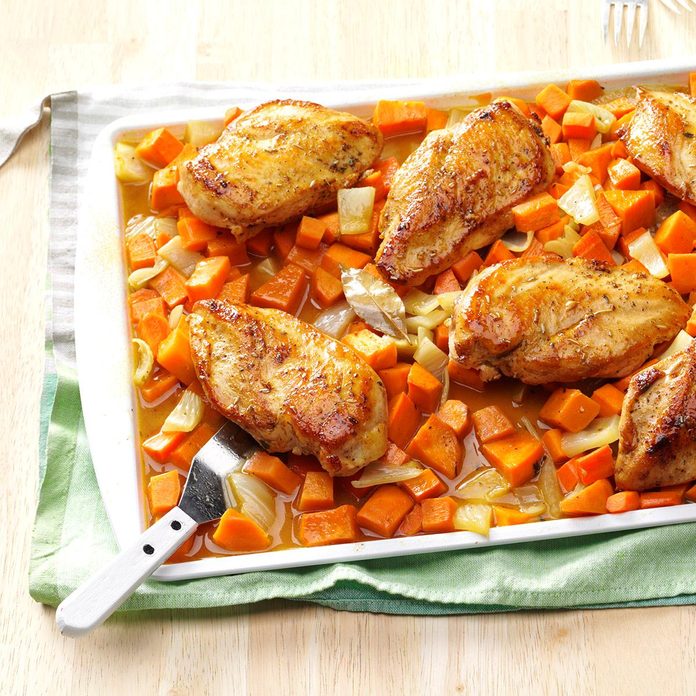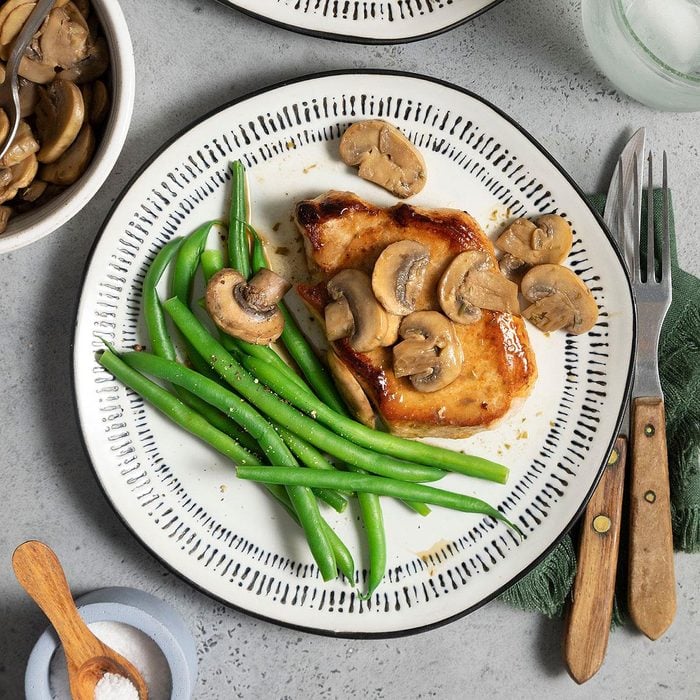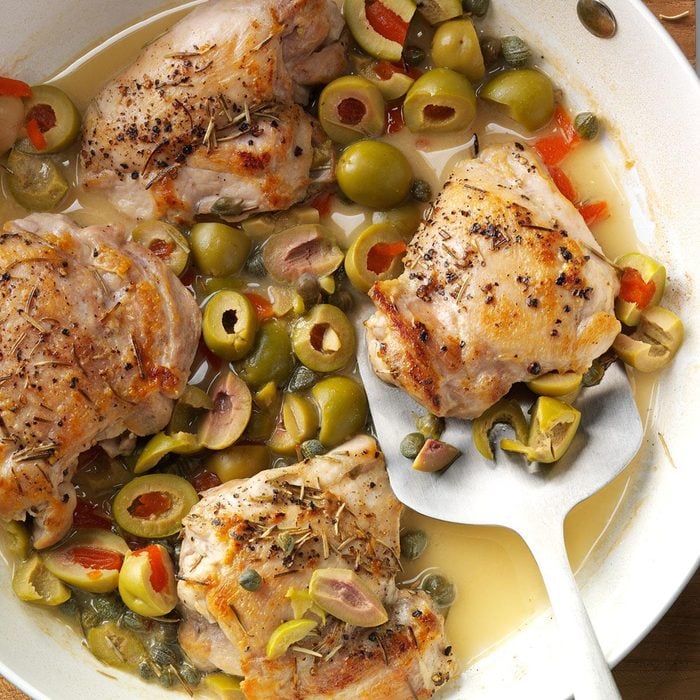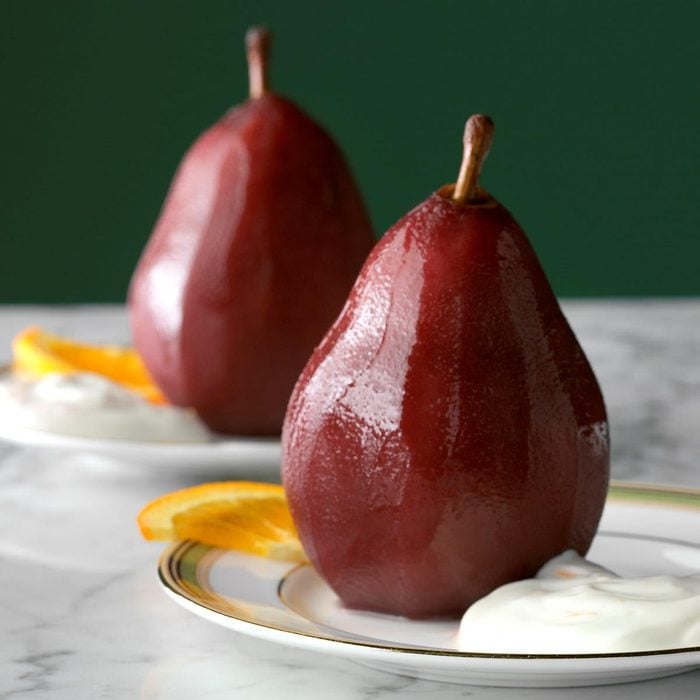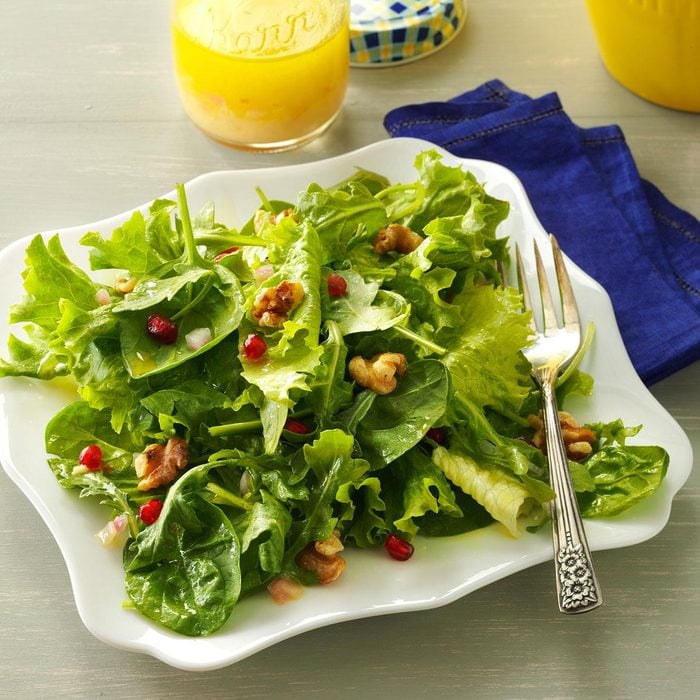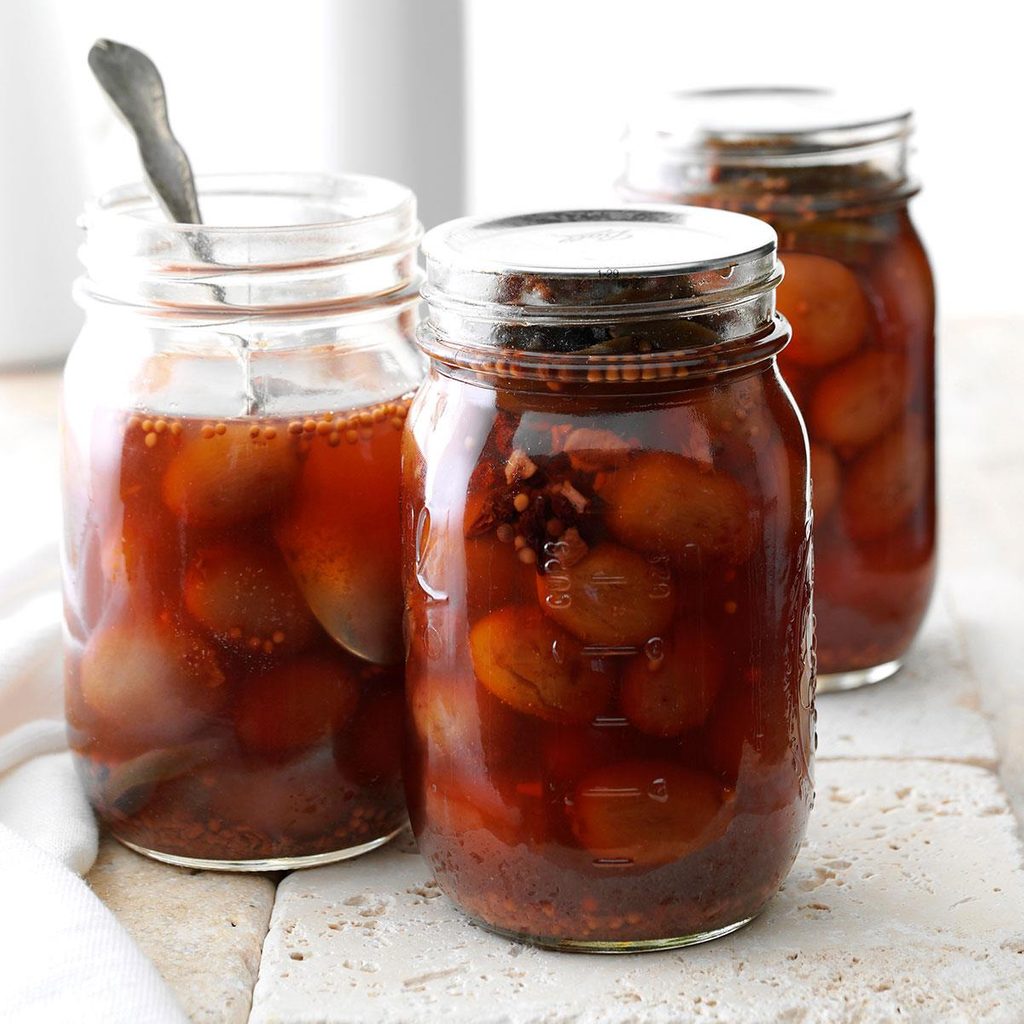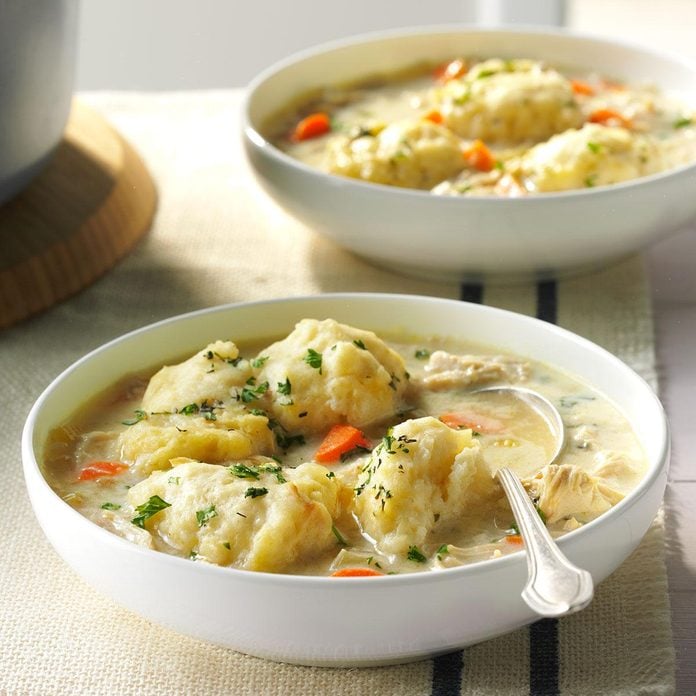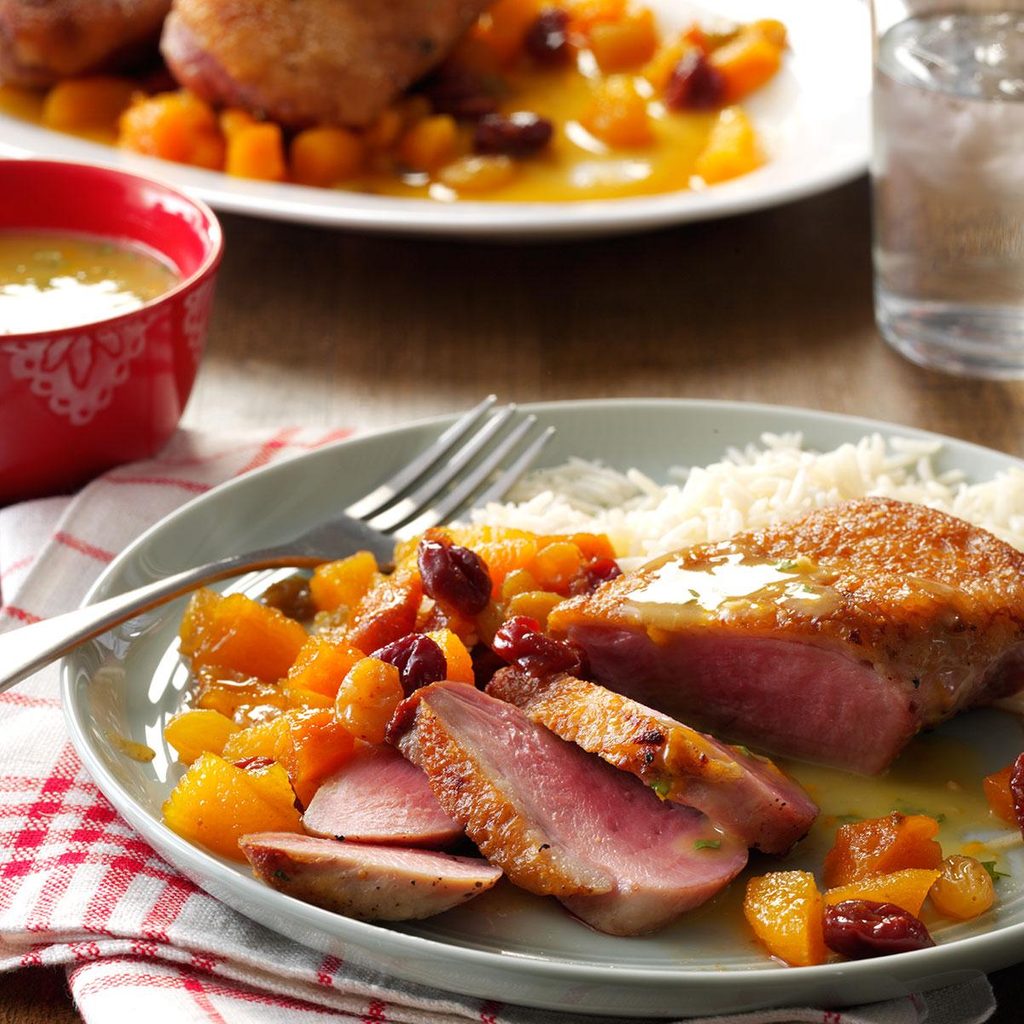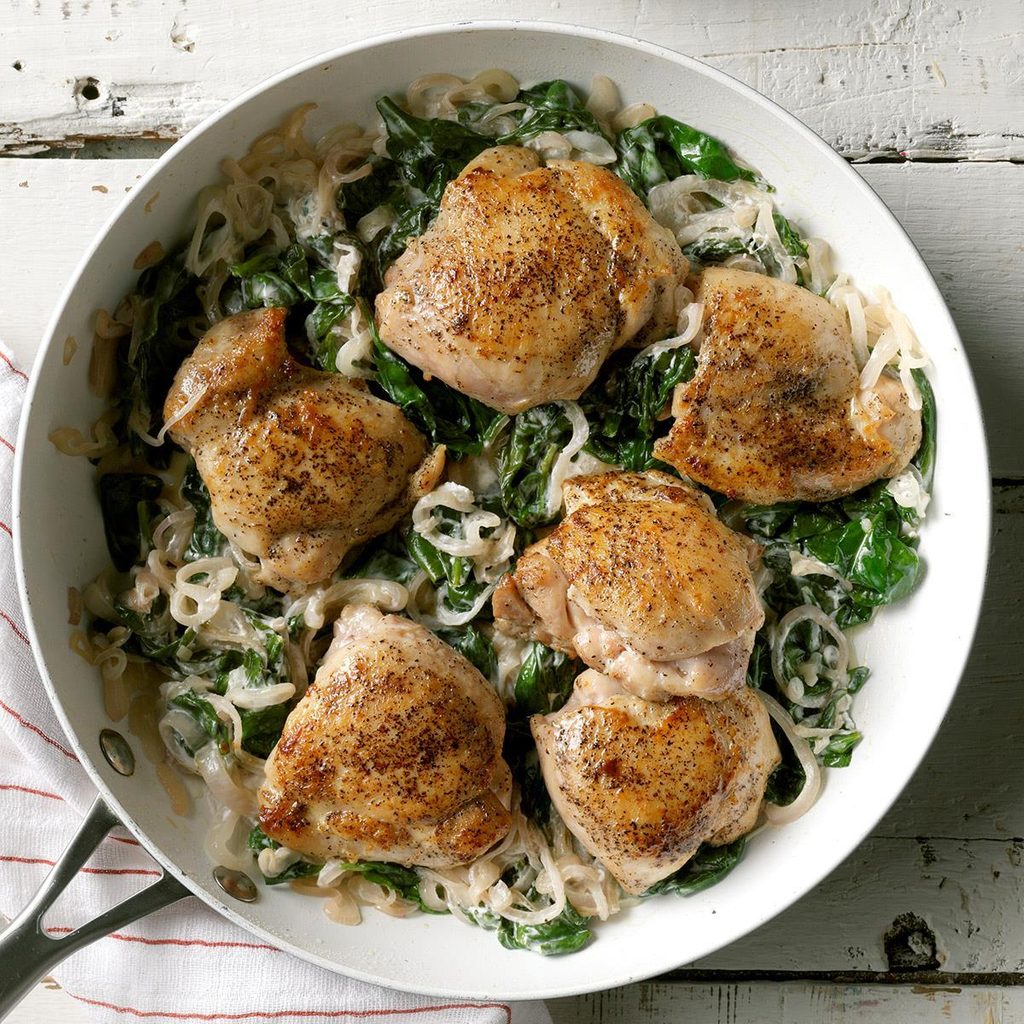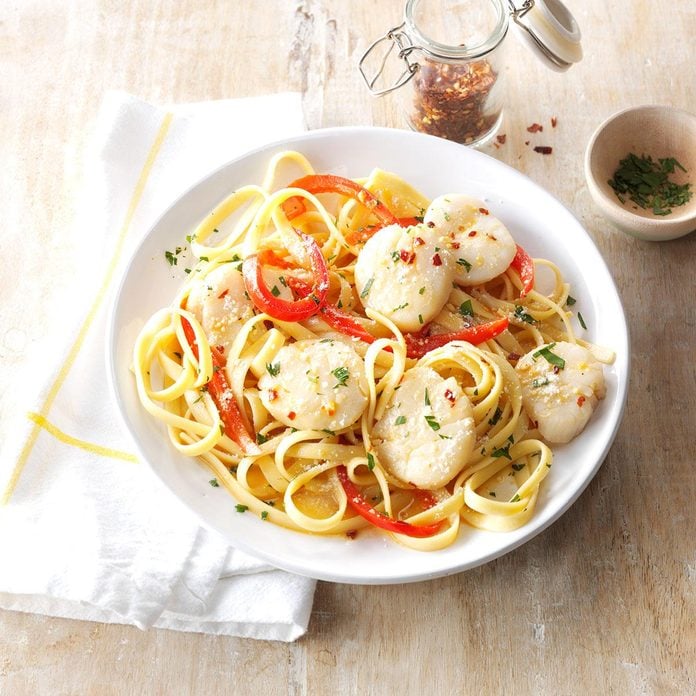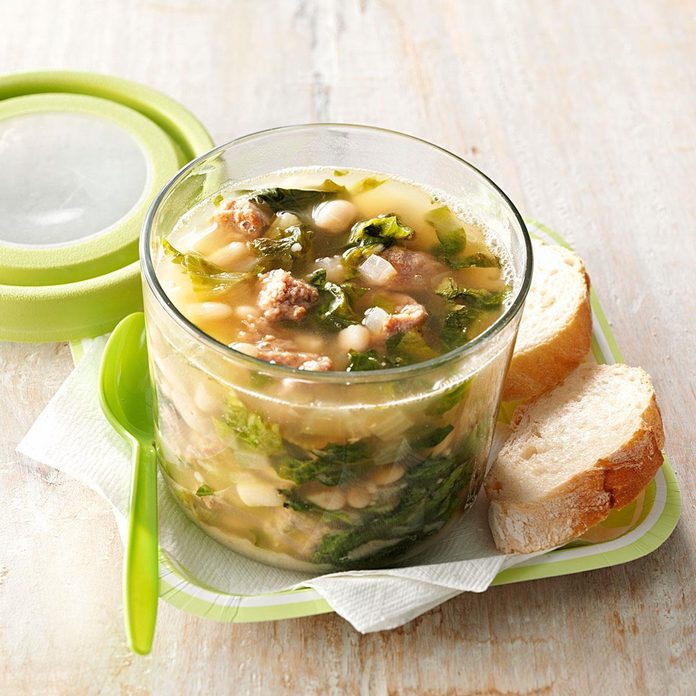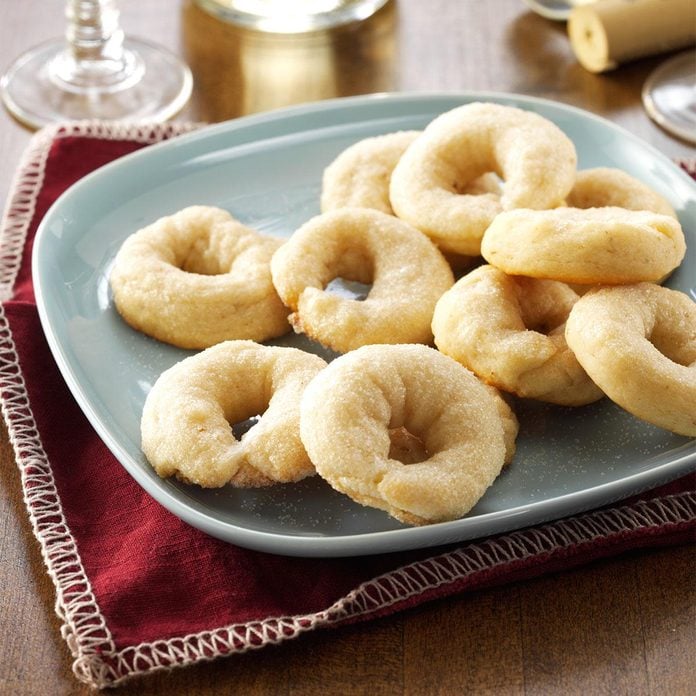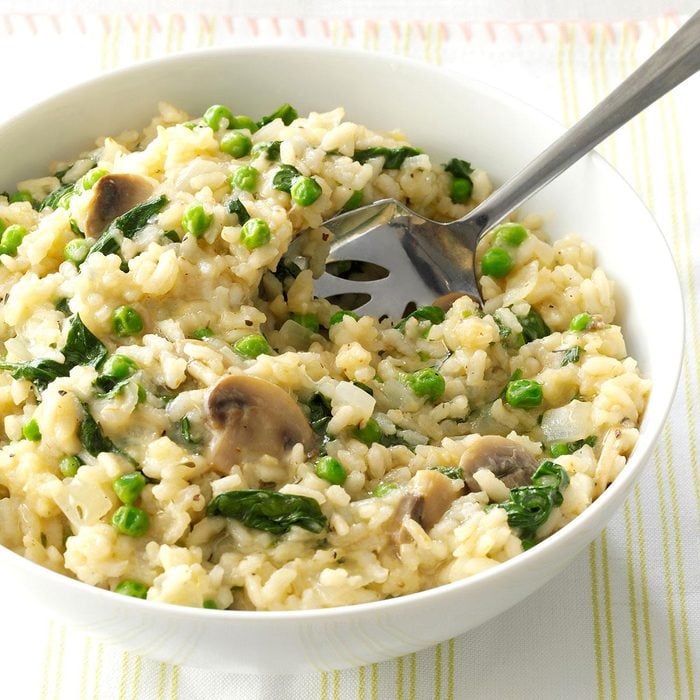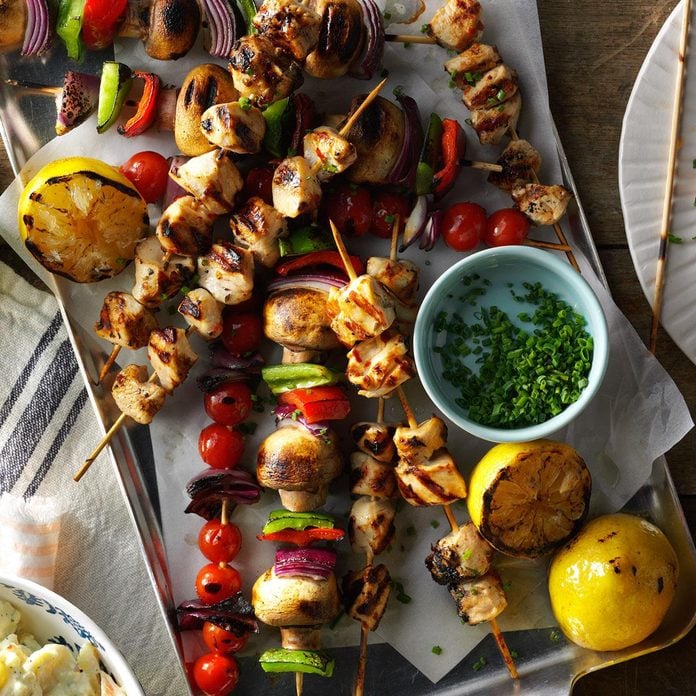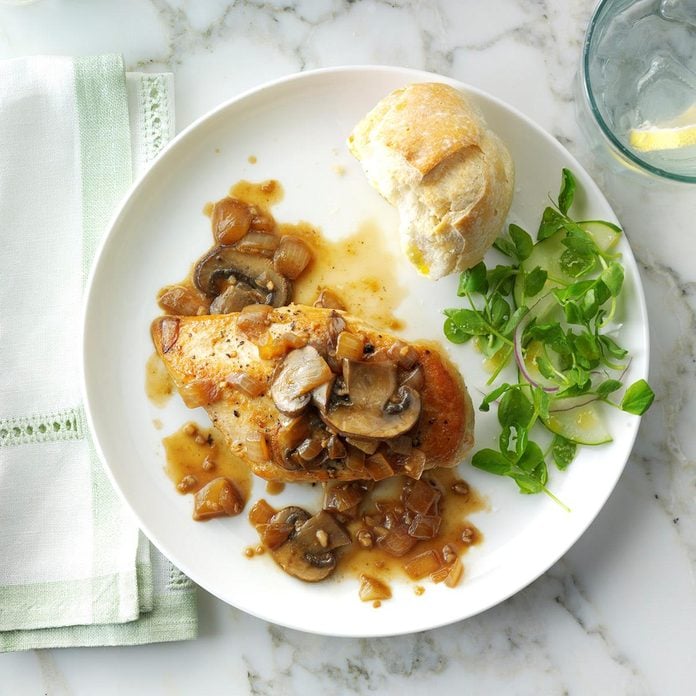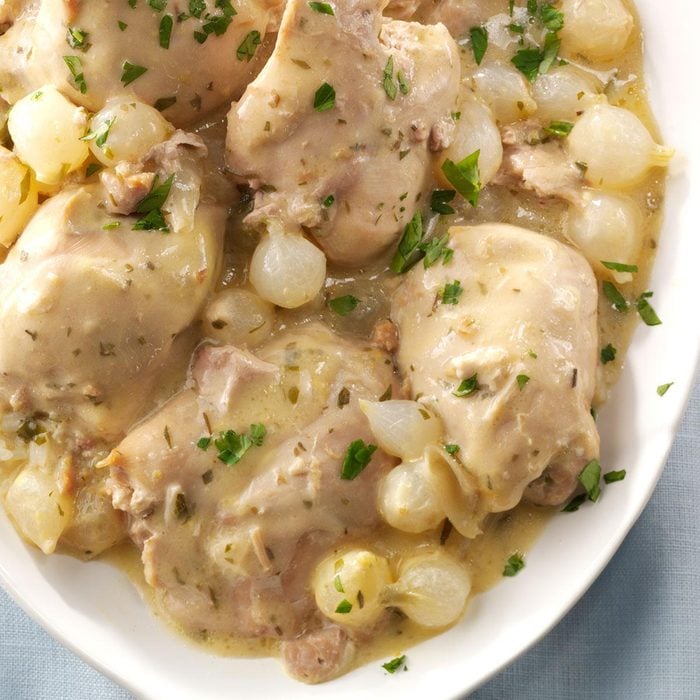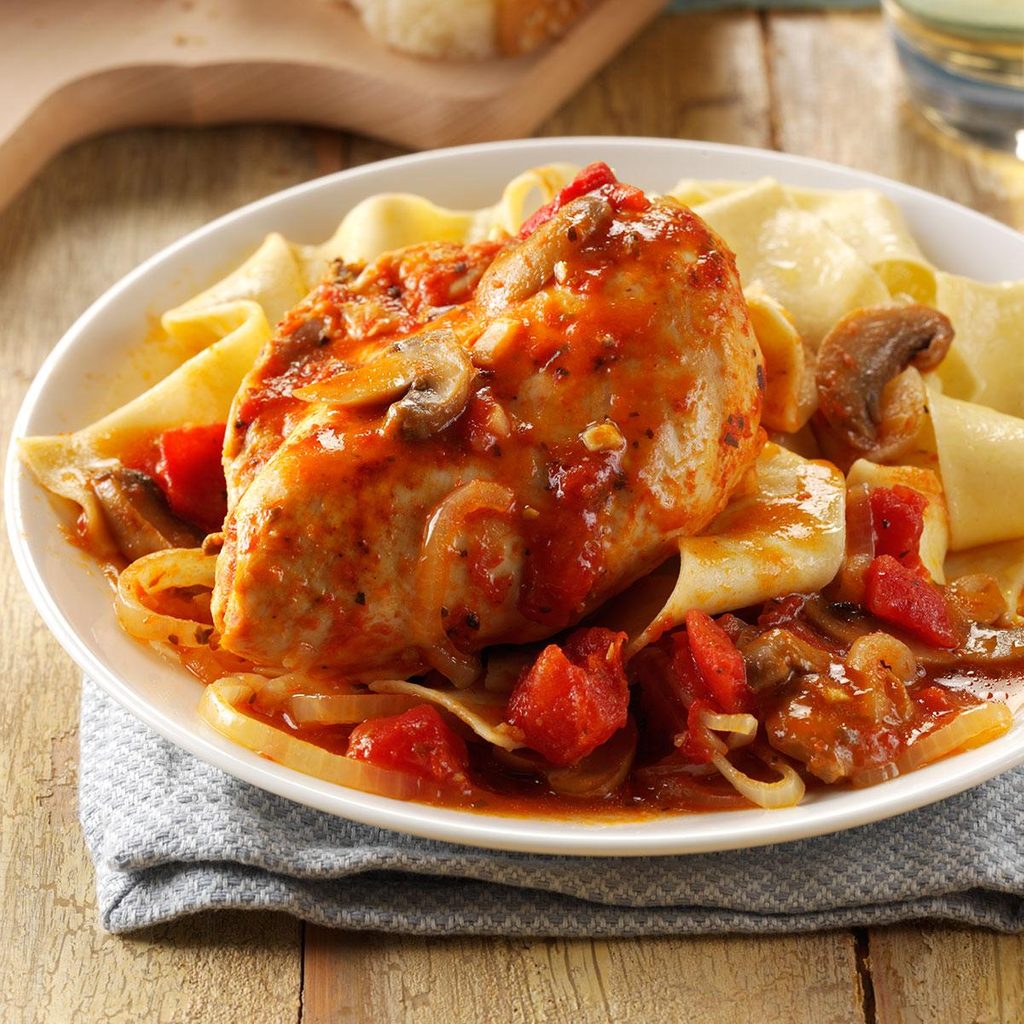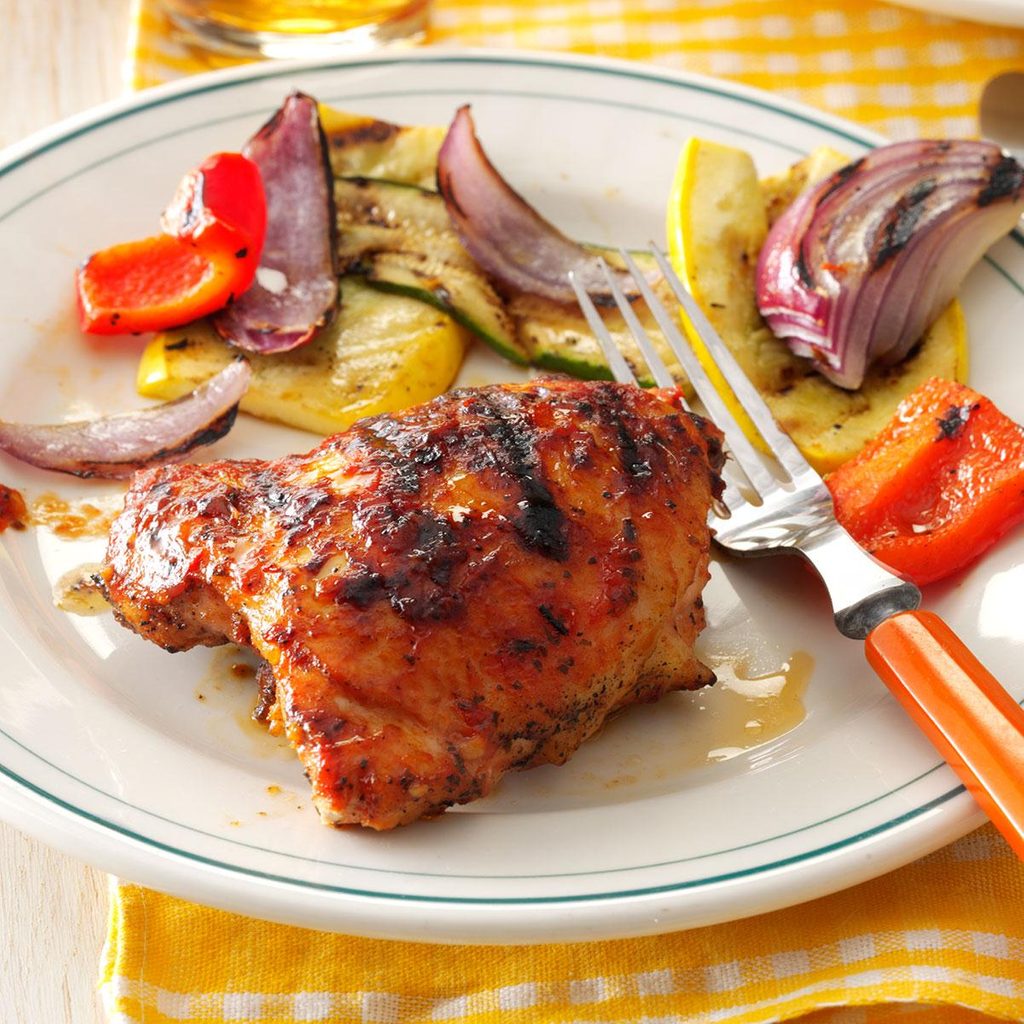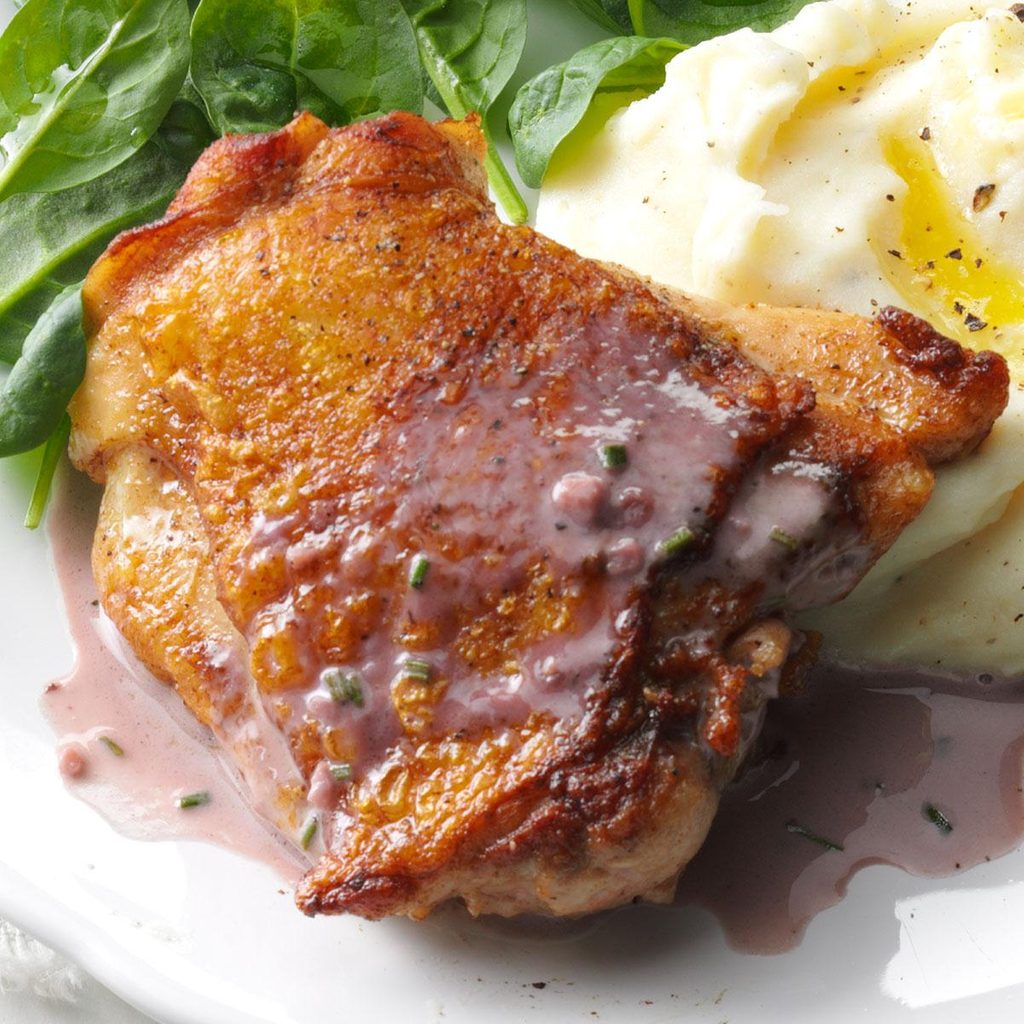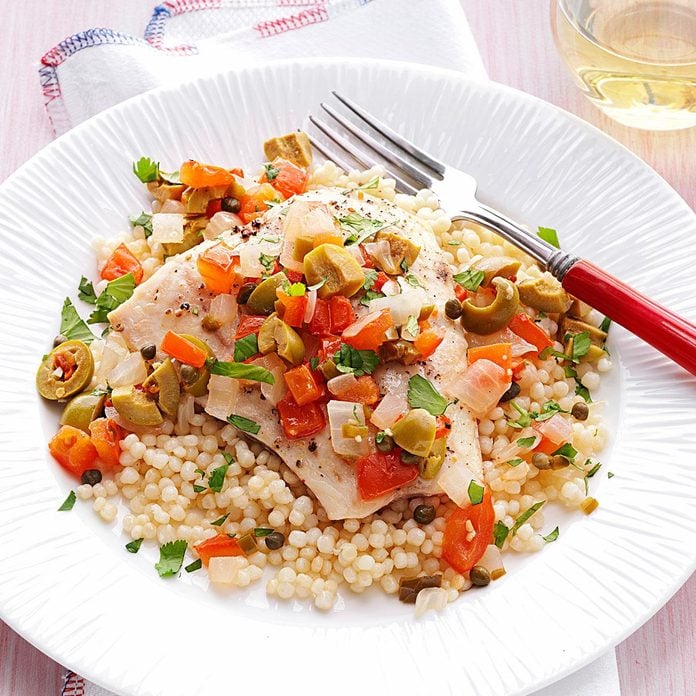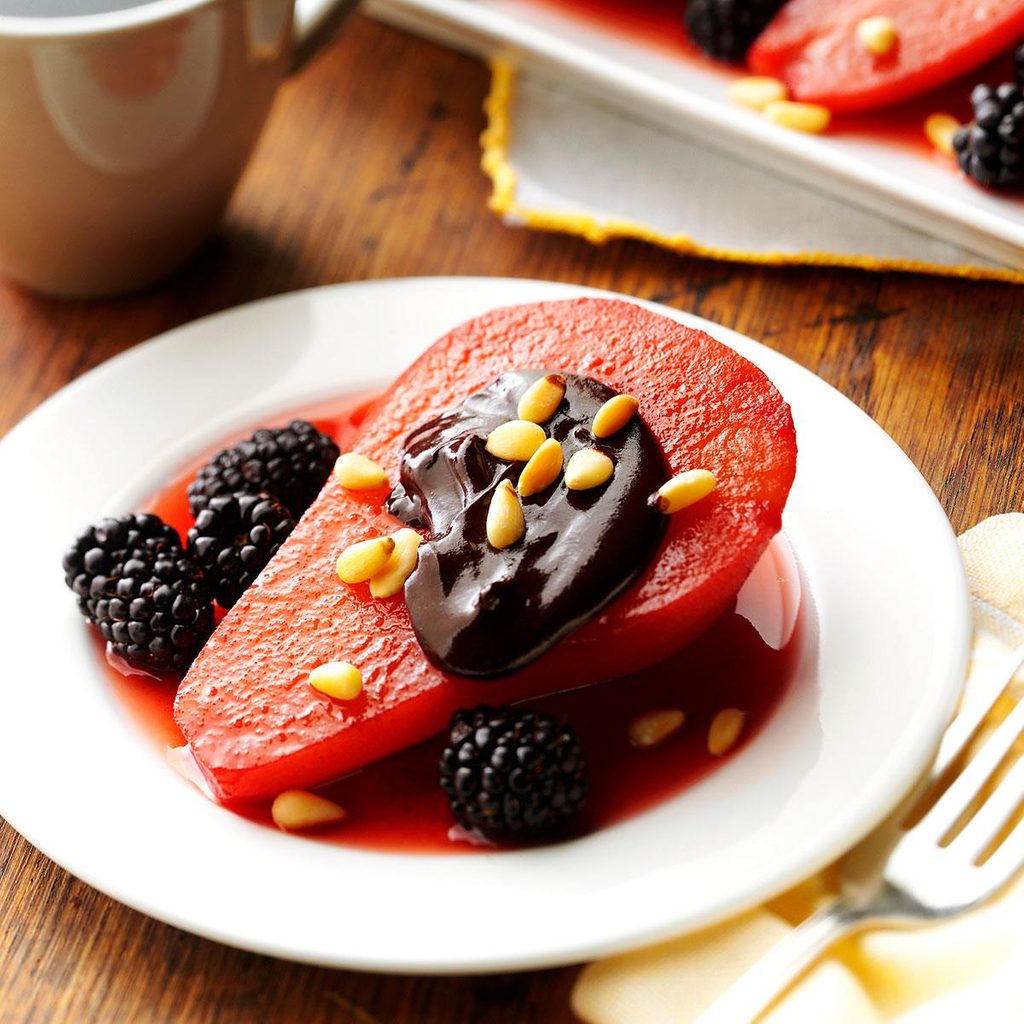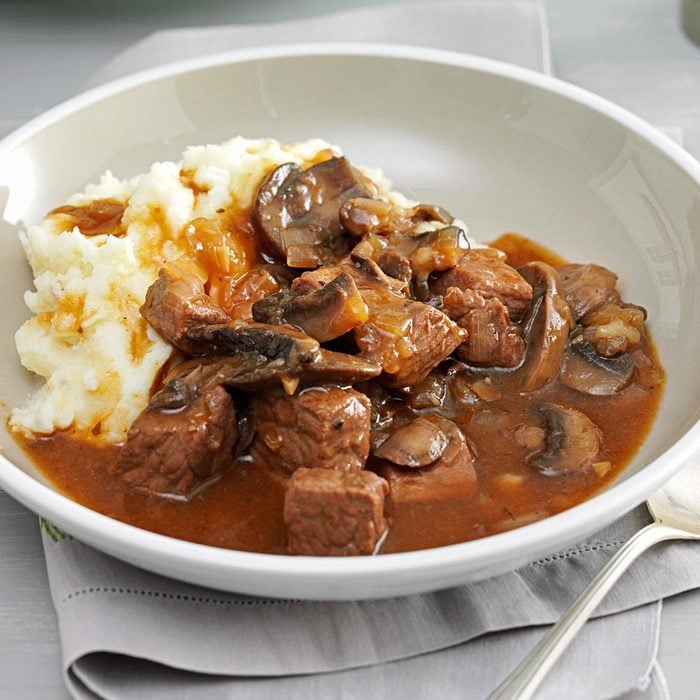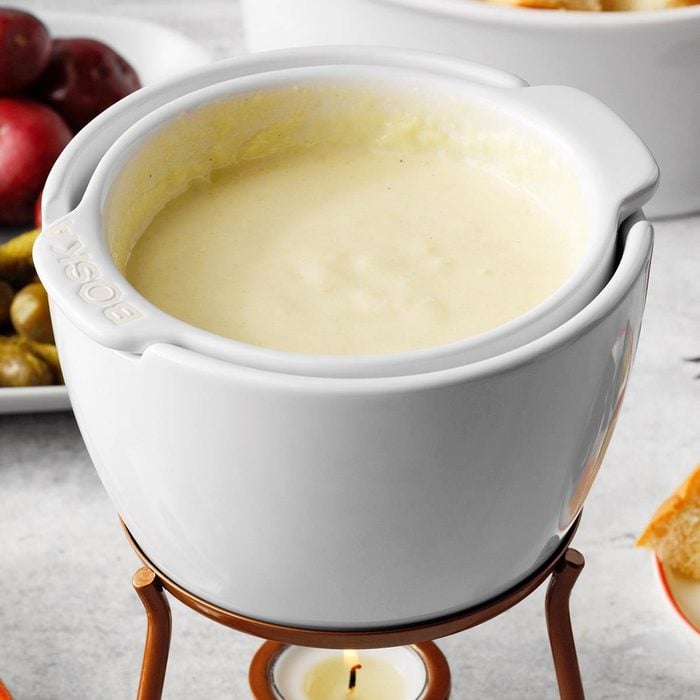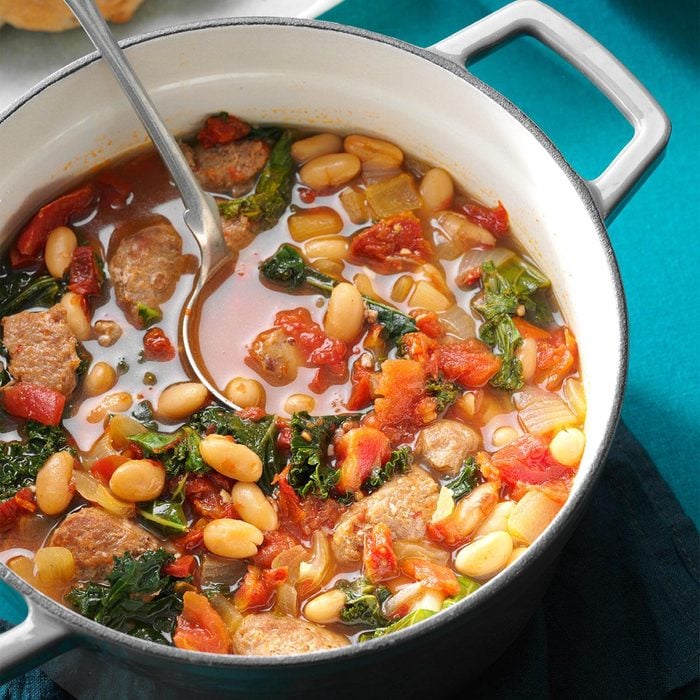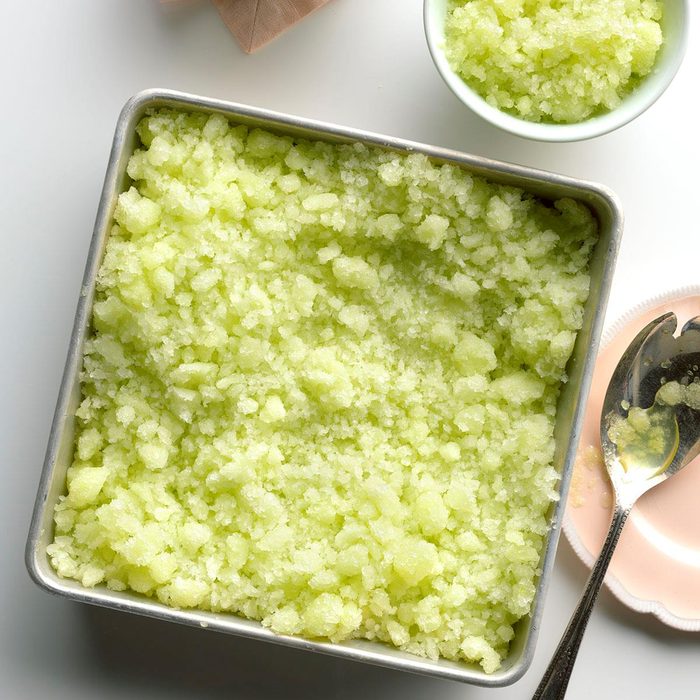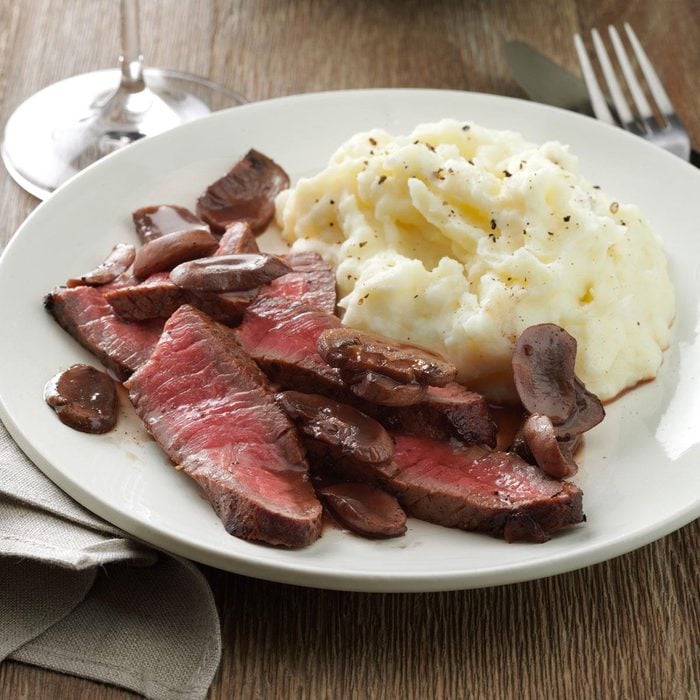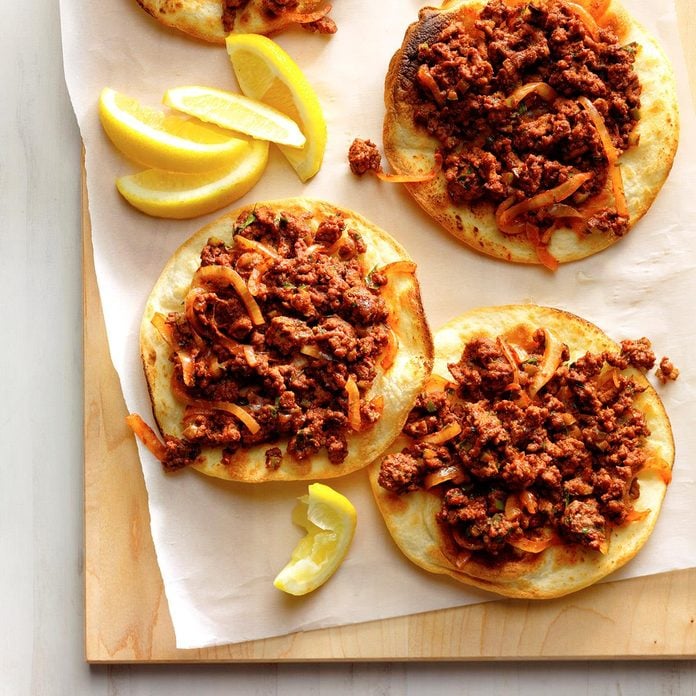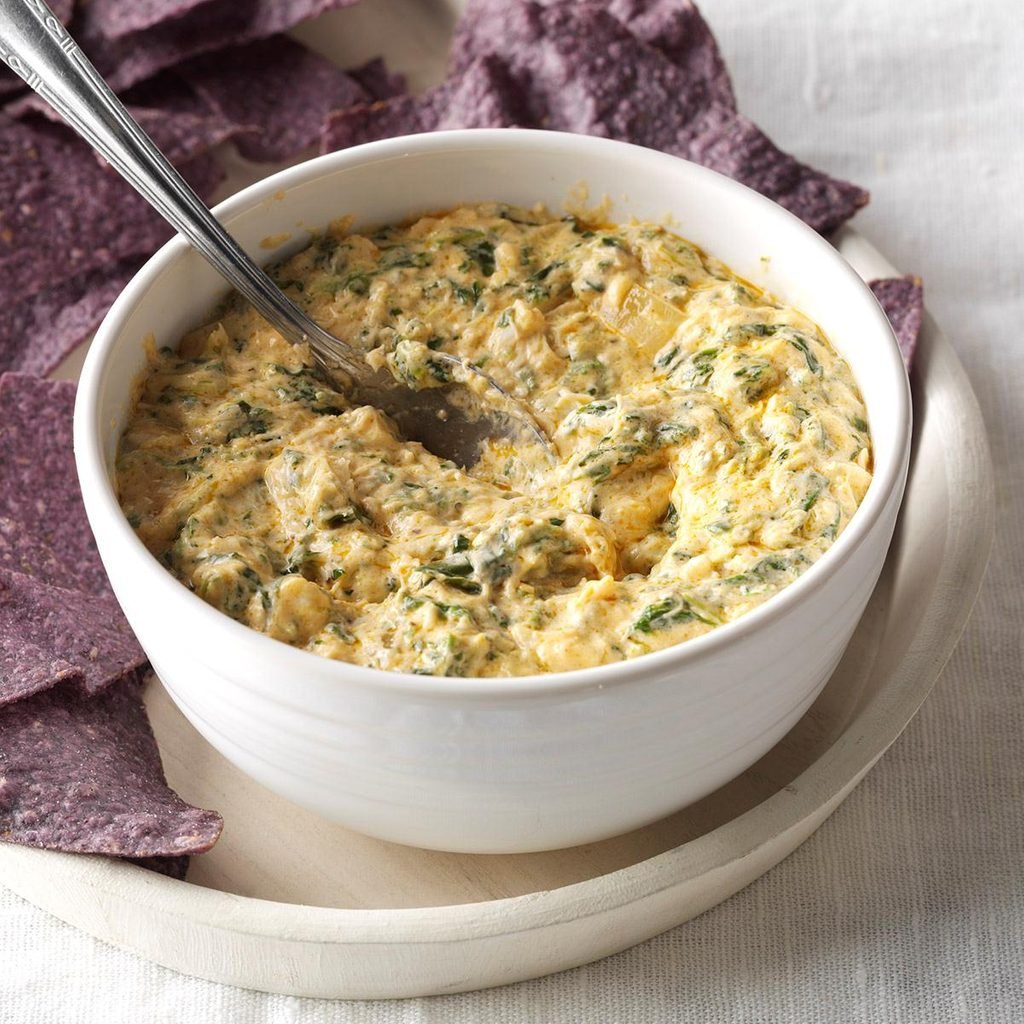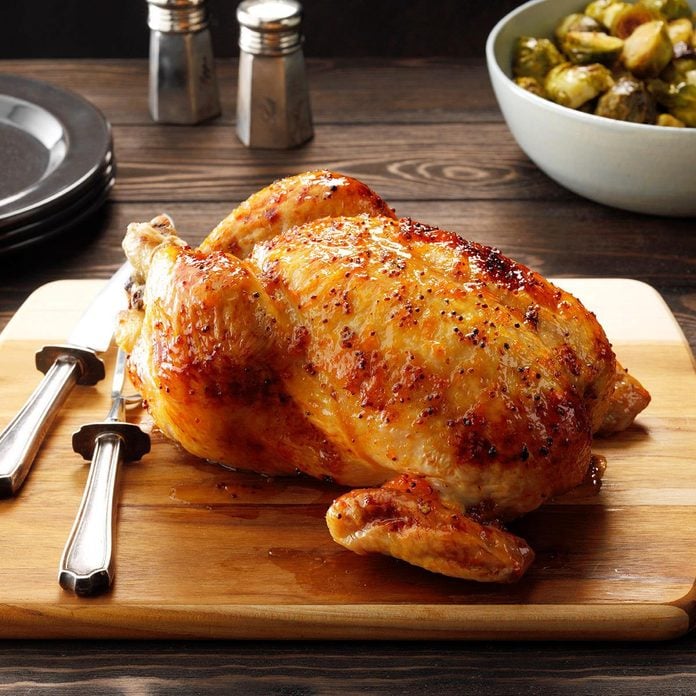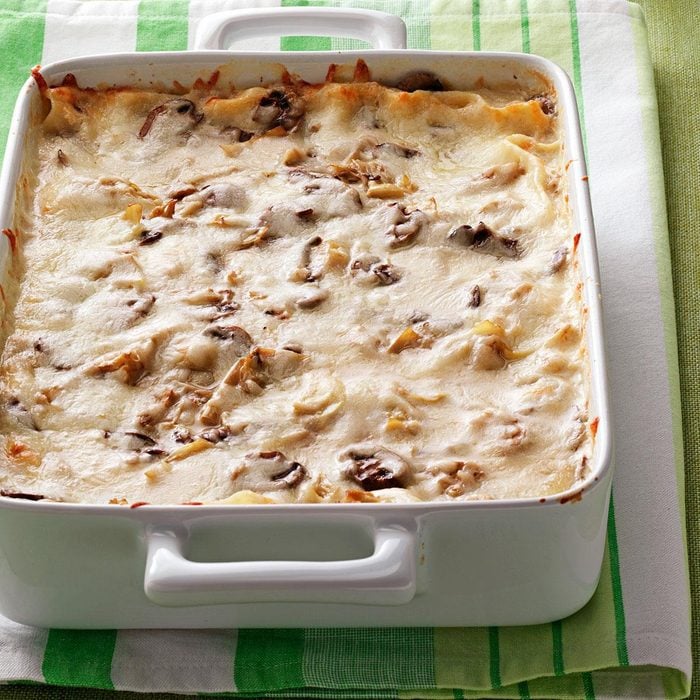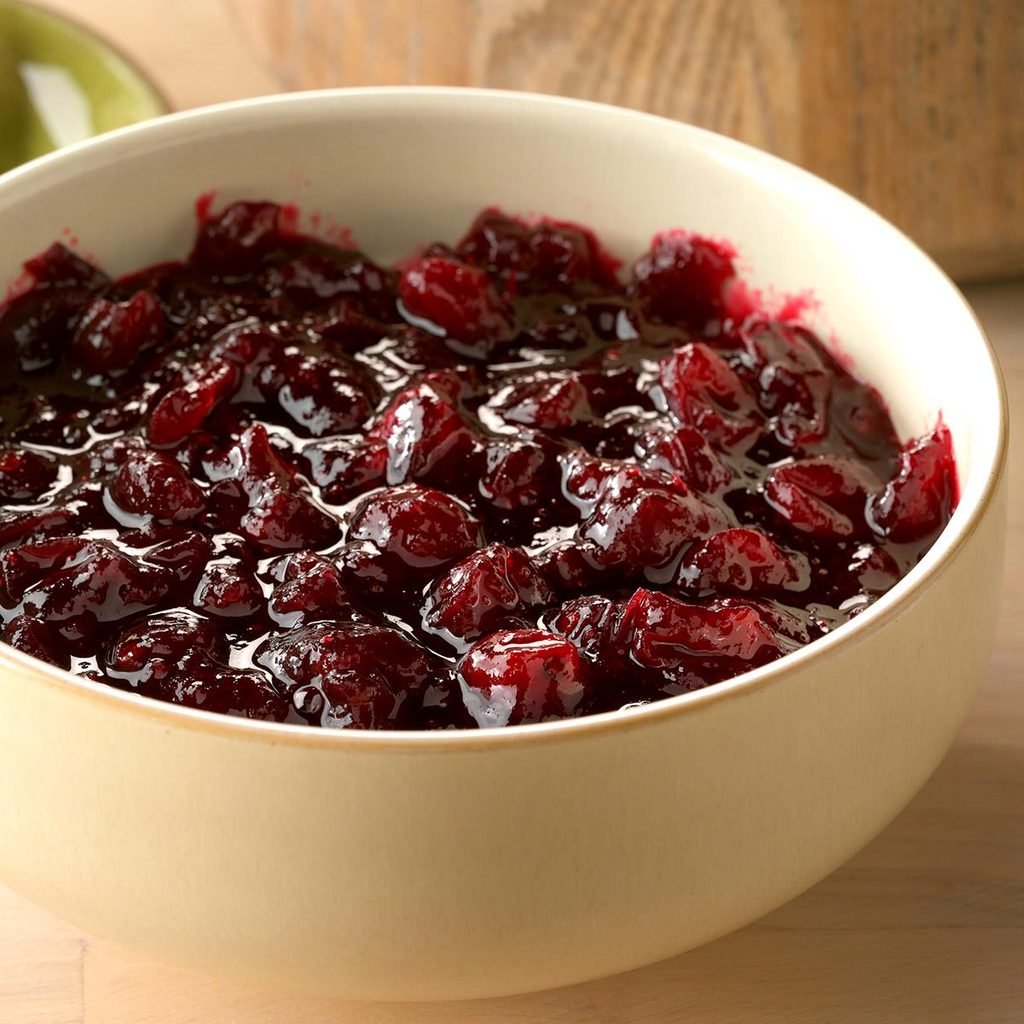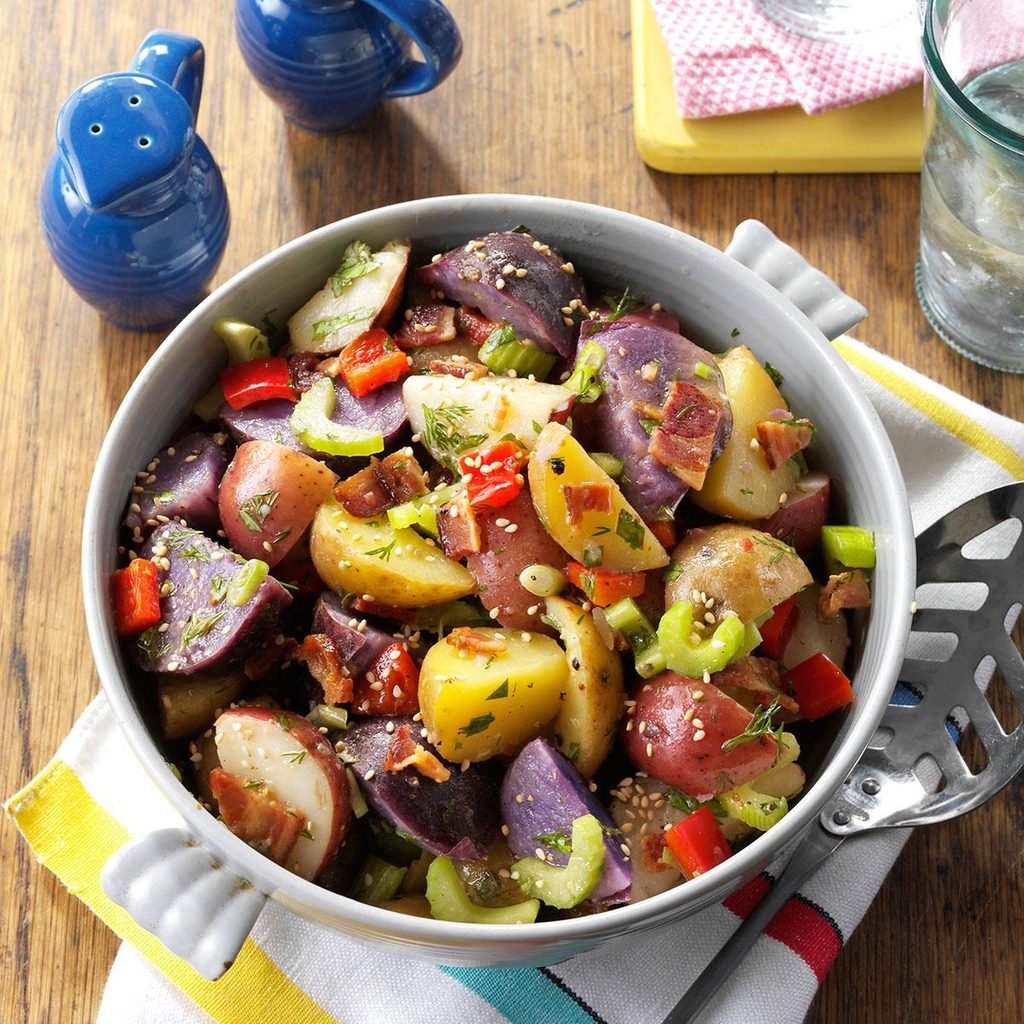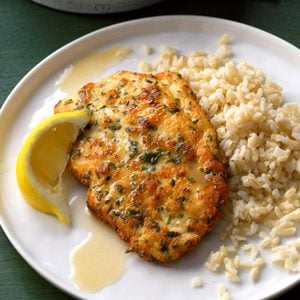 Taste of Home
Taste of Home
Once you've tried this tangy, yet delicate lemon chicken piccata, you won't hesitate to make it for company. Seasoned with parmesan and parsley, the chicken cooks up golden brown, then is drizzled with a light lemon sauce. —Susan Pursell, Fountain Valley, California
Go to Recipe
Shrimp PuttanescaI throw together these bold ingredients for a feisty seafood pasta. —Lynda Balslev, Sausalito, California
(Here's what "
cooking wine" really means.)
Parmesan Chicken with Artichoke HeartsI've liked the chicken and artichoke combo for a long time. Here's my own lemony twist. With all the praise it gets, this dinner is so much fun to serve. —Carly Giles, Hoquiam, Washington
Here are some expert tips on
how to cook with wine.
Burgundy PearsThese warm spiced pears elevate slow cooking to a new level of elegance, yet they're incredibly easy to make. Your friends won't believe this fancy-looking dessert came from a slow cooker. —Elizabeth Hanes, Peralta, New Mexico
Beef Osso BucoTreat holiday guests to elegant comfort food at its best. Our osso buco beef boasts a thick, savory sauce complemented by the addition of gremolata, a chopped herb condiment made with lemon zest, garlic, and parsley. —Taste of Home Test Kitchen, Milwaukee, Wisconsin
Parmesan RisottoRisotto is a creamy Italian rice dish. In this version, the rice is briefly sauteed, then slowly cooked in wine and seasonings. Watch for that magic moment when the risotto transforms from just rice in liquid to creamy, tender deliciousness. —Taste of Home Test Kitchen
Peppercorn Beef Top Loin RoastA red wine sauce complements the brown sugar rub on the roast in this inviting entree. You can't go wrong with this down-home dish!—Taste of Home Test Kitchen
Beef Filets with Portobello SauceThese tasty steaks seem special, but they are fast enough for an everyday dinner. We enjoy the mushroom-topped filets with crusty French bread, a mixed salad and a light lemon dessert. —Christel Stein, Tampa, Florida
Wintertime Braised Beef StewThis easy beef stew is incredibly rich. Since it's even better a day or two later, you may want to make a double batch. —Michaela Rosenthal, Woodland Hills, California
Sour Cherry SorbetMy mother-in-law has a sour cherry tree in her yard that yields many quarts of cherries each June, and this is a great way to use some up. This frosty sweet-sour sorbet is a refreshing treat on a hot summer day. —Carol Gaus, Itasca, Illinois
Ultimate Pot RoastDutch oven pot roast recipes are the ultimate comfort food. When juicy pot roast simmers in garlic, onions and veggies, everyone comes running to ask "When can we eat?" The answer? Just wait—it will be worth it. —Taste of Home Test Kitchen
Chicken Sausage & Gnocchi SkilletI had a bunch of fresh veggies and combined them with sausage, gnocchi and goat cheese when I needed a quick dinner. Mix and match your own ingredients for unique results. —Dahlia Abrams, Detroit, Michigan
Honey-Roasted Chicken & Root VegetablesWhen my whole family comes over for dinner, I make a big platter of roast chicken with sweet potatoes, carrots and fennel. My dad leads the fan club. —Kelly Ferguson, Conshohocken, Pennsylvania
Pork Chops & MushroomsMy mother-in-law gave me this recipe years ago, and I have used it ever since. My family loves the sweetness with a little kick.—Hilary Rigo, Wickenburg, Arizona
Skillet Chicken with OlivesWhile I was visiting my cousin Lilliana in Italy, she made this heavenly chicken for lunch. Now it's a family favorite stateside, too. —Rosemarie Pisano, Revere, Massachusetts
Poached Pears with Orange CreamEnd the meal with a flourish with this easy and elegant dessert. A hint of orange lends just enough sweetness to temper the wine's bold taste. —Julianne Schnuck, Milwaukee, Wisconsin
Mixed Greens with Lemon Champagne VinaigretteSimple and delicious, this champagne vinaigrette recipe pairs perfectly with mixed greens or a salad of your choice. —Ray Uyeda, Mountain View, California
Sweet & Spicy Pickled Red Seedless GrapesMost people don't think about grapes when creating a canned pickle recipe. The pickling liquid for these grapes includes red wine, vinegar and common pickling spices like coriander, mustard seeds and hot pepper; it also contains warm spices like cinnamon and star anise along with brown sugar. These flavor-packed grapes are unique and delicious on a fab antipasto, pickle or cheese tray. —Cheryl Perry, Hertford, North Carolina
The Best Chicken & Dumplings Homemade chicken and
dumplings from scratch harken back to my childhood and chilly days when we devoured those cute little balls of dough swimming in hot, rich broth. It's one of those
types of soup you'll want to eat again and again. —Erika Monroe-Williams, Scottsdale, Arizona
Duck Breasts with Apricot ChutneyWhen serving this entree as part of a buffet, try using chafing dish to keep it warm. —Taste of Home Test Kitchen
Chicken Thighs with Shallots & SpinachWhat could be better than an entree that comes with its own creamy vegetable side? This healthy supper goes together in no time flat and makes an eye-catching presentation. —Genna Johannes, Wrightstown, Wisconsin
Sea Scallops and FettuccineThis luscious and lemony pasta dish is so easy, it's become one of our weekly meal mainstays. But it's also elegant enough to serve to guests. —Donna Thompson, Laramie, Wyoming
Sausage & Cannellini Bean SoupHere's my reproduction of a dish from a famous Chicago eatery. We think it rivals the original. I usually cook this at least once a week. It's a tasty way to keep my lunchbox full of healthy options. —Marilyn McGinnis, Peoria, Arizona
Anise & Wine CookiesMy grandmother did not speak English very well, but she knew the language of great food. These wine cookies are crisp and best eaten after being dunked in even more wine.—Julia Meyers, Scottsdale, Arizona
Spring Green RisottoOnce a week I create a new recipe for my blog, An Officer and a Vegan. I first made this risotto when I needed something cheerful and comforting. It would be fantastic with asparagus, zucchini or summer squash, but use whatever veggies are in season. —Deanna McDonald, Grand Rapids, Michigan
Spicy Lemon Chicken KabobsWhen I see Meyer lemons in the store, it must be spring. I like using them for these easy chicken kabobs, but regular grilled lemons still add the signature smoky tang. —Terri Crandall, Gardnerville, Nevada
White Wine Garlic ChickenThis garlic chicken is fantastic over cooked brown rice or your favorite pasta. Don't forget a sprinkle of Parmesan cheese too. —Heather Esposito, Rome, New York
Wine-Braised Chicken with Pearl OnionsThis is a family favorite handed down from my grandmother in London. She made it for every family gathering. It was always the first food to go on the table and the first one to disappear. —Wayne Barnes, Montgomery, Alabama
Contest-Winning Chicken CacciatoreMy husband and I own and operate a busy farm. There are days when there's just no time left for cooking! It's really nice to be able to come into the house at night and smell this wonderful slow cooker chicken cacciatore. —Aggie Arnold-Norman, Liberty, Pennsylvania
Chili Sauce ChickenChili sauce, garlic and basil add flavor to these moist chicken thighs. We enjoy the tender grilled chicken not just in summertime, but throughout the year. —Marilyn Waltz, Idyllwild, California
Chicken with Red Wine Cream SauceMy creamy chicken tastes like a five-star restaurant dish but takes only minutes and few ingredients to make. Use fresh rosemary. Trust me. —Sarah Campbell, Terre Haute, IN
Cozumel Red Snapper VeracruzCozumel, Mexico, is home to magnificent Veracruz-style red snapper. You can't bring it home, so create your own. Try parchment paper instead of the foil packet. —Barb Miller, Oakdale, Minnesota
Slow Cooker Spiced Poached PearsSome of the many reasons I love this dessert recipe are: it's on the healthy side; it's easy to make; the recipe can be mostly prepared in advance of company arriving; and the presentation is lovely.—Jill Mant, Denver, Colorado
Beef & Mushroom Braised StewEvery spring, my family heads out to our timber acreage to collect morel mushrooms, and then we cook up this stew. We use morels, of course, but baby portobellos or button mushrooms or will work, too. —Amy Wertheim, Atlanta, Illinois
Three-Cheese FondueI got this easy recipe from my daughter, who lives in France. It’s become my go-to fondue, and I make it often for our family.—Betty A. Mangas, Toledo, Ohio
Italian Sausage Kale SoupMy mom dehydrates the last pick of tomatoes from her garden each fall—perfect for quick soups like this one. When I have time to prepare dried beans, I do—but don't worry if you don't. Canned beans are just as good. —Lori Terry, Chicago, Illinois
Honeydew GranitaMake this refreshing summer treat when melons are ripe and flavorful. I like to garnish each serving with a sprig of mint or a small slice of honeydew. —Bonnie Hawkins, Elkhorn, Wisconsin
Sirloin with Mushroom SauceA mouthwatering combination of rich brown mushroom sauce and tender strips of peppery steak is a wonderful way to end a busy day. It’s special enough to make for company and ready in less than 30 minutes. —Joe Elliott, West Bend, WI
Lehmejun (Armenian Pizza)This pizza-style recipe came from my friend Ruby's mom, who is a crazy-good cook. I added my own flair and tweaked it by using flour tortillas instead of making a dough. —Tamar Yacoubian, Ketchum, Idaho
Warm Crab & Spinach DipIn Maryland, we stayed at a hotel that sent guests home with a crab dip recipe and a spice pouch. Now I’ve made my own dip that rekindles memories of that trip. —Kristina Wenner, Jamison, Pennsylvania
Glazed Roast ChickenI like to make this for weeknight dinners. You can make this roast chicken with apricot glaze or quince jelly. —Victoria Miller, San Ramon, California
Artichoke Mushroom LasagnaArtichokes and baby portobellos add delightful flavor and depth to this impressive dish. —Bonnie Jost, Manitowoc, Wisconsin
Red Wine Cranberry SauceWe were feeling festive when we started our holiday cooking, but a bottle of wine was a bit more than we wanted to drink. I added half a cup to the cranberry sauce, in place of juice, and a new recipe was born! —Helen Nelander, Boulder Creek, California
Red, White & Blue Potato SaladTossing the cooked potatoes with stock and wine right after you drain them infuses them with flavor. The liquid absorbs like magic. —George Levinthal, Goleta, California
Up Next: 13 Easy Food and Wine Pairings Everyone Should Know
